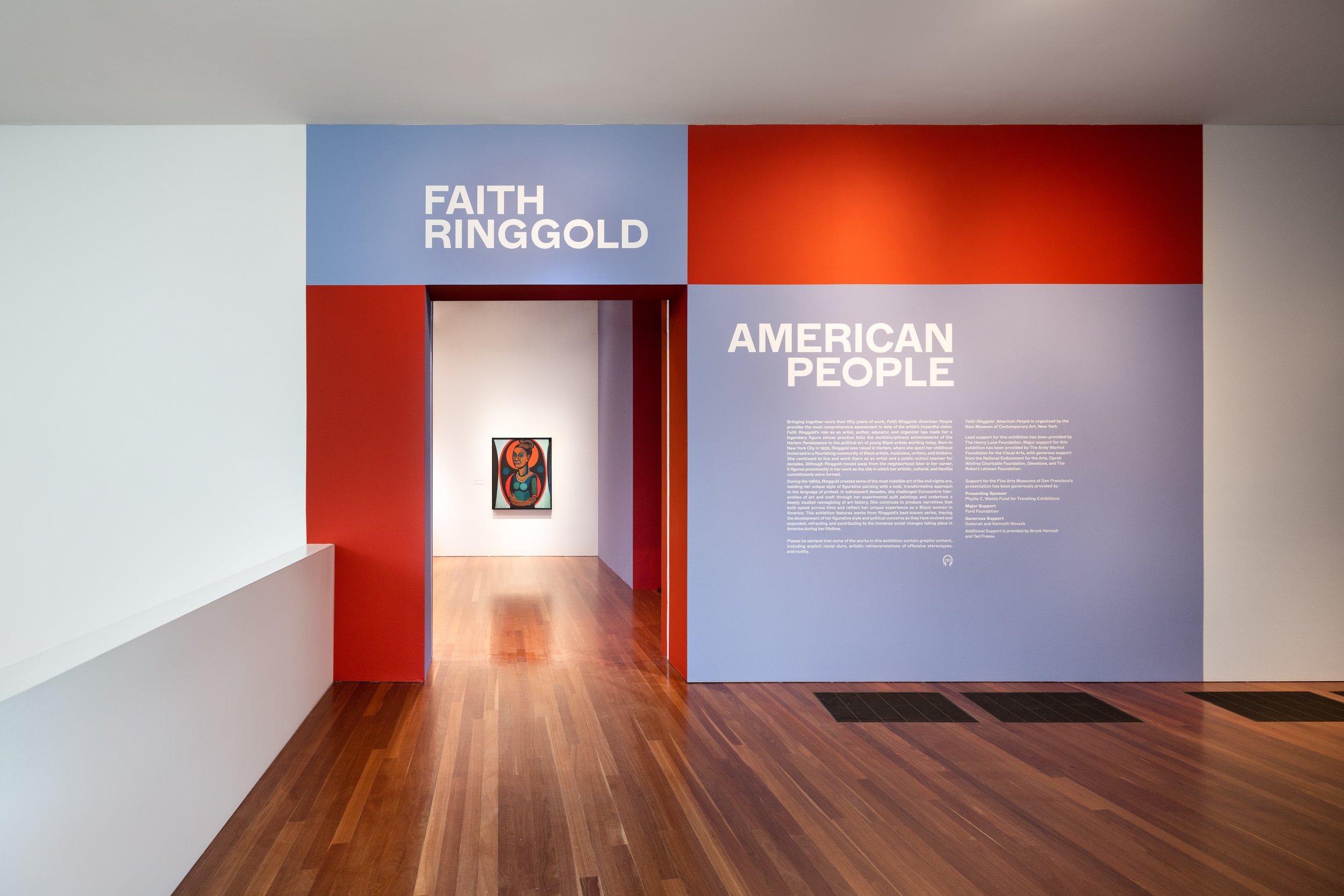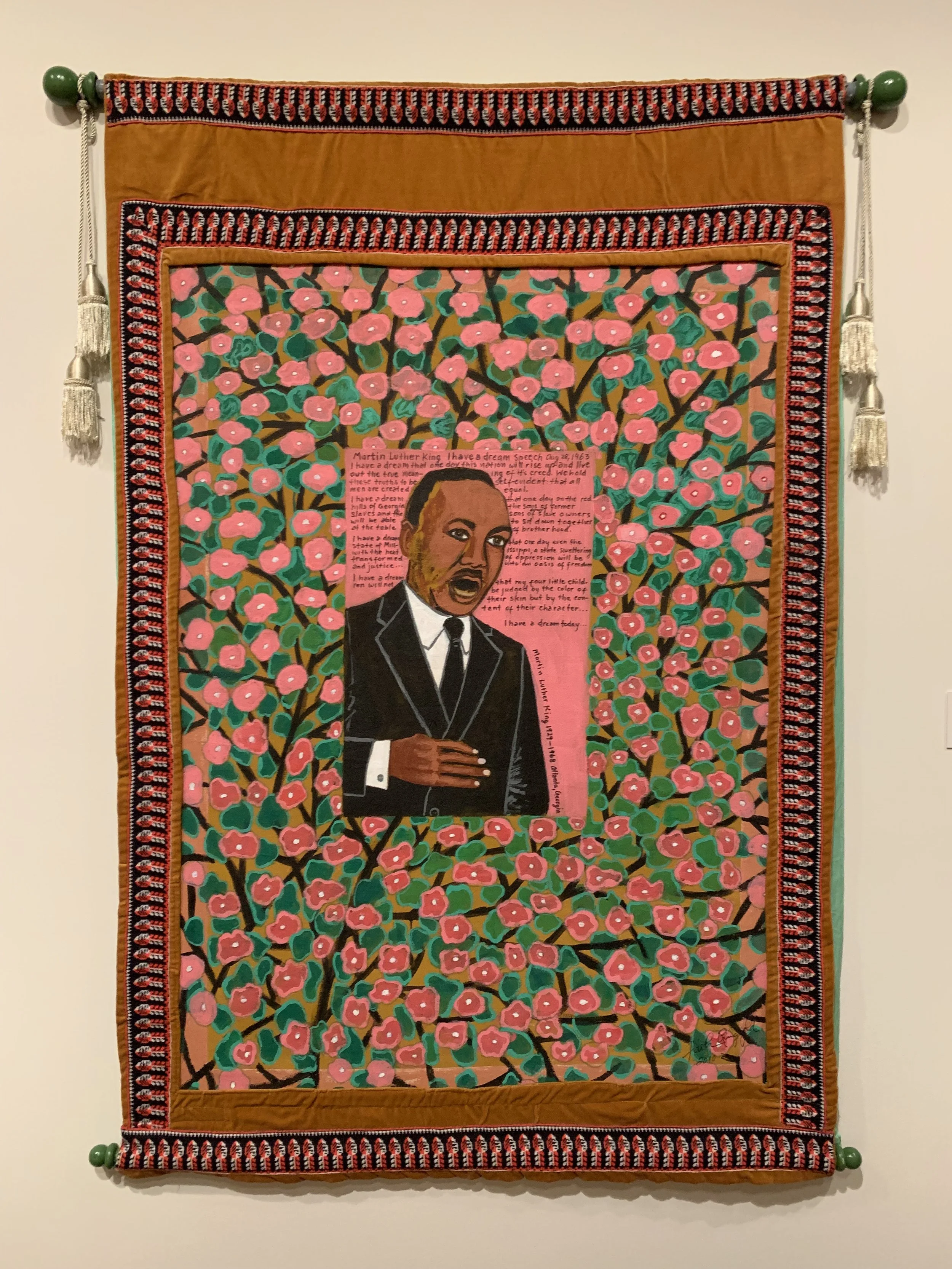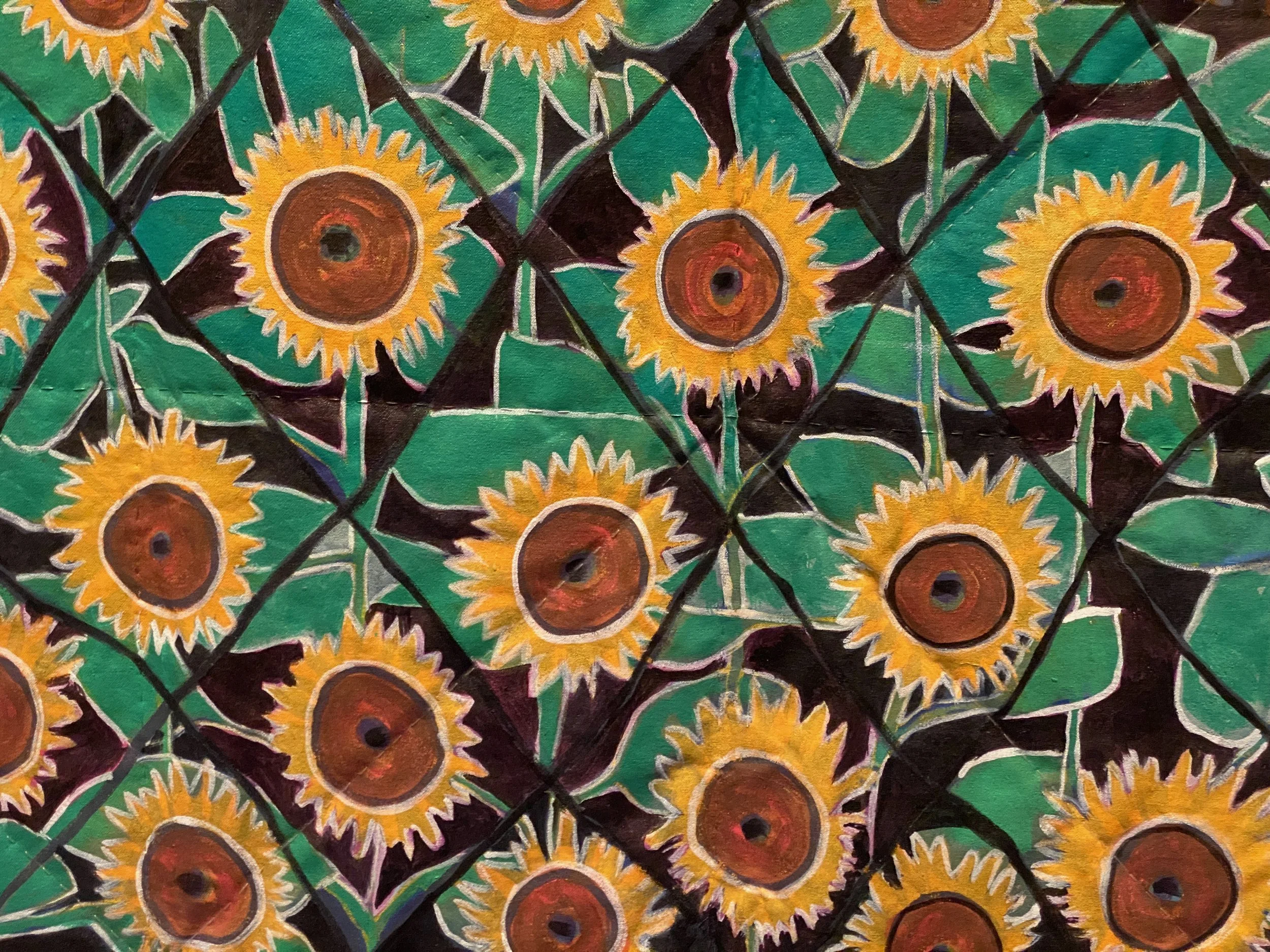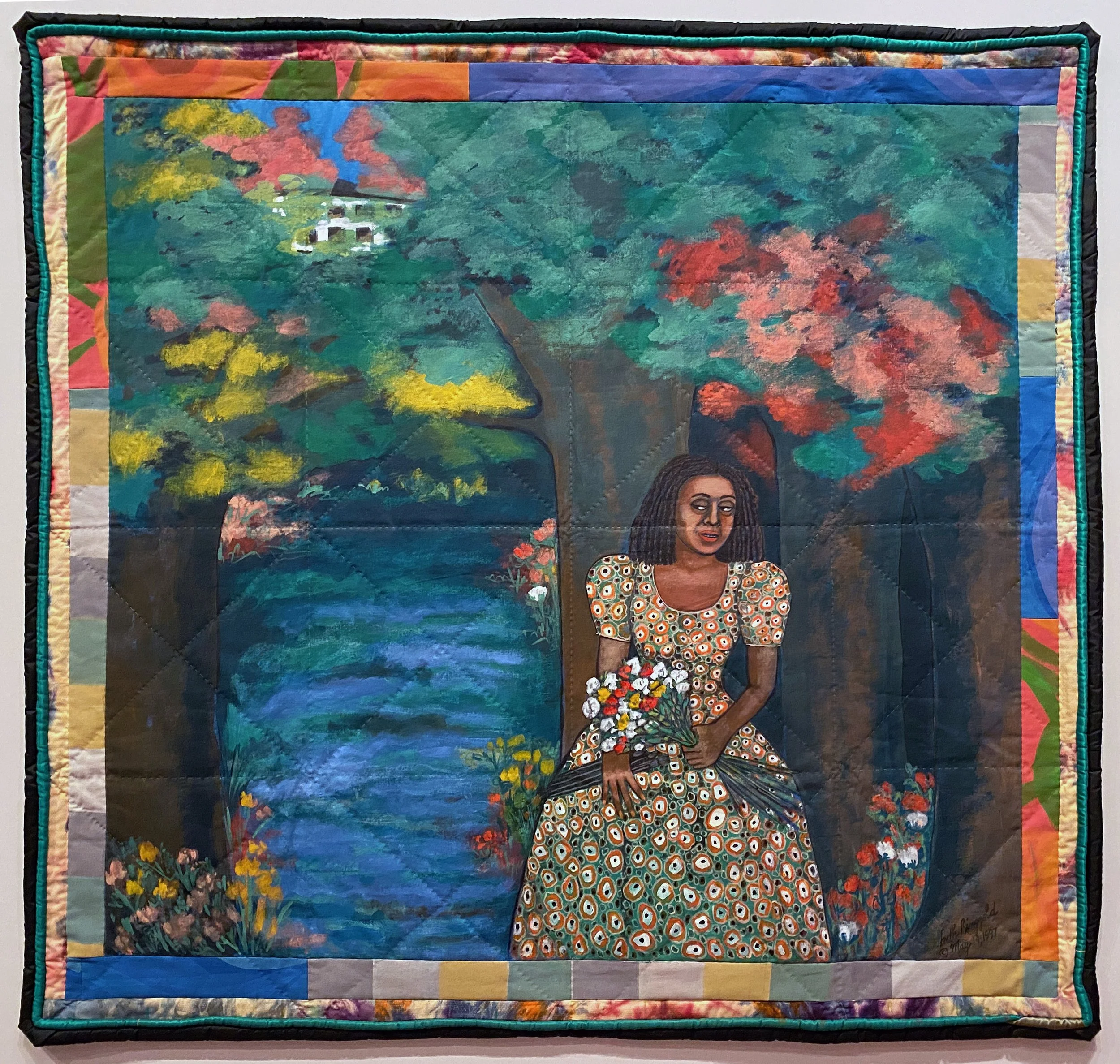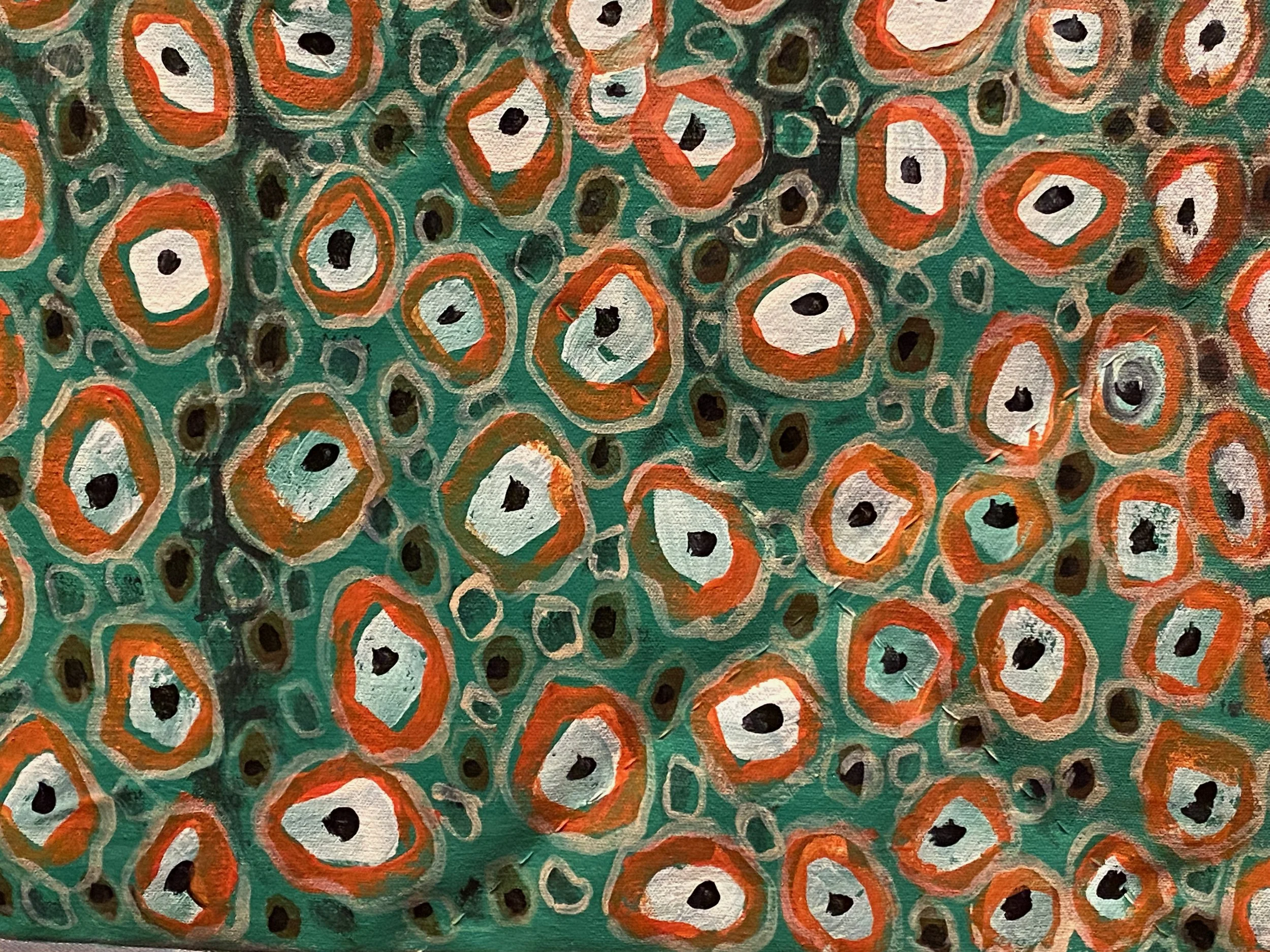Happy Birthday, Faith Ringgold
Faith Ringgold (born 1930) The Washington Post / Via Getty Images Image courtesy of the Fine Arts Museums of San Francisco
Born on this day in 1930 in New York City, Ringgold created an impactful vision. For over 50 years, her art and activism have been at the vanguard of anti-racism and feminism.
Ringgold’s groundbreaking work is currently touring in a first-ever retrospective curated by The New Museum, entitled “Faith Ringgold: American People”. A few installation images can be found below, courtesy of the Fine Arts Museums of San Francisco.
I was deeply impressed by this powerful show, currently on view at the De Young Museum in San Francisco. Ringgold's best-known series are represented and the show reveals the development of her figurative style as it has evolved to meet the urgency of social and political change. From paintings to tapestries, story quilts to soft sculptures, Ringgold’s ability to depict the unvarnished realities of life for Black women in America is on full display.
The experience of viewing the work is complex: as a designer, I am drawn to her sophisticated color use, her jaunty depiction of layered patterns, the shimmering repeating motifs she uses as backgrounds…yet as a human I am keenly aware of the messages in the work, which are sadly as relevant today as they were when they were created. The visual language Ringgold created allows her to tell her stories—whether frank depictions of a troubled society or joyful alternate realities—in a compelling and disarming way.
Faith Ringgold, Coming to Jones Road Part 2: Martin Luther King Jr. Tanka #3: I Have A Dream, 2010, Acrylic on canvas with pieced fabric, 61 × 42 in (154.9 × 106.7 cm). Courtesy the artist and ACA Galleries, New York
Detail, Coming to Jones Road Part 2: Martin Luther King Jr. Tanka #3: I Have A Dream. The Textile Eye.
“It is always time to return to her and her work,” New Museum curator Gary Carrion-Murayari says, “because—as a true classic—it trembles with a sense of timeless beauty coupled with a sense of perennial relevance and urgency.”
Faith Ringgold, Born in a Cotton Field: The American Collection #3, 1997. Acrylic on canvas with painted and pieced fabric. 73 ½ × 79 ½ in (186.7 × 201.9 cm) Private collection
Detail, Born in a Cotton Field: The American Collection #3. The Textile Eye
Ringgold was raised in Harlem, where she spent her childhood surrounded by a flourishing community of Black artists, musicians, writers, and thinkers. She learned sewing skills from her mother, Willi Posey, that she would later apply in her famous story quilts. Ringgold’s mother was a fashion designer, working as Madame Posey, and had learned to quilt from her mother and great-grandmother, Susie Shannon, who had been a slave.
After she earned bachelor’s and master’s degrees from City College in New York in the late 1950s, Ringgold continued to explore, sampling from various global traditions including Buddhist thangka paintings and Cubism while questioning the dominant position of the Western tradition.
Detail of The Sunflowers Quilting Bee at Arles: The French Collection, Part I, #4. The Textile Eye
Faith Ringgold, "The Sunflowers Quilting Bee at Arles: The French Collection, Part I, #4", 1991. Acrylic on canvas, printed and tie-dyed pieced fabric, and ink, 74 x 80 in. (188 x 203.2 cm). Collection Oprah Winfrey. © Faith Ringgold / ARS, NY and DACS, London, courtesy ACA Galleries, New York 2022
Faith Ringgold, Listen to the Trees: The American Collection #11, 1997, Acrylic on canvas with painted and pieced fabric, 76 ½ × 80 in (194.3 × 203.2 cm). © Faith Ringgold / ARS, NY and DACS, London, courtesy ACA Galleries, New York 2022. The Textile Eye
Detail, Listen to the Trees: The American Collection #11. The Textile Eye
During the 1960s, Ringgold created some of the most impactful art of the civil rights era, combining her unique style of figurative painting with a bold, transformative approach to the language of protest.
By the early 1970s, Faith Ringgold's feminist perspective and growing interest in non-Western art led her to textiles and craft-based techniques, traditionally considered "women's work" and thus deemed unequal to the mediums of painting and sculpture. During this time she created the Feminism Series, consisting of landscapes painted with the words of important Black women from history, and she worked with her mother on the Slave Rape Series. The intergenerational collaboration between the artist and her mother, who created the complex patchwork borders for each piece, places them within a larger context of African American quilting traditions—a tradition depicted in some of the works.
She began crafting her pioneering story quilts in the early 1980s following the death of her mother. The story quilts explore narrative formats, drawing on devotional folk paintings – such as Mexican retablos – cartoon books, and other pictorial storytelling traditions, as well as the practice of oral and written folk tales. It’s in these pieces that her inspiring and subversive narratives shine: alternate histories of power and resilience told with a deft combination of painted fabric, written words, layered pattern, and quilted detailing.
Detail of "Two Jemimas: The American Collection #9". The Textile Eye
Faith Ringgold, "Two Jemimas: The American Collection #9", 1997. Acrylic on canvas with painted and pieced fabric, 77 x 81 in. (195.6 x 205.7 cm). Glenstone Museum, Potomac, Maryland. © Faith Ringgold / ARS, NY and DACS, London, courtesy ACA Galleries, New York 2022
“People are now fascinated by the quilt. It has been released from its status as ‘just craftsy stuff’ to high art.”
–Faith Ringgold
Faith Ringgold, A Family Portrait: The American Collection #2, 1997, Acrylic on canvas with painted and pieced fabric , 79 ½ × 80 in (201.9 × 203.2 cm), Collection Bill and Elizabeth Landes, Chicago. © Faith Ringgold / ARS, NY and DACS, London, courtesy ACA Galleries, New York 2022. The Textile Eye
Faith Ringgold, Mother’s Quilt, 1983, Acrylic, appliquéd and embroidered fabric, and sequins , 58 × 43 ½ in (147.3 × 110.5 cm) Blanchet Bradley Collection. The Textile Eye
“From her contributions to the creation of a visual vocabulary of the African Diaspora in the United States to enshrining women’s work and craft as fine arts, Faith Ringgold has profoundly influenced the art-historical canon of the 20th century and beyond,” states Janna Keegan, Assistant Curator of Contemporary Art and Programming at the Fine Arts Museums of San Francisco. “Through activism she has ensured wider representation of Black and female artists in major arts institutions, while her children’s stories have helped instill a sense of social justice, agency, and empathy in a generation of readers—we are really just beginning to understand the true scope and scale of her influence.”
In her review of the show for KQED, artist and writer Sarah Hotchkiss sums it up: “The great pleasure in viewing so much of Ringgold’s art is learning that she cannot be assigned to any one category, be it Black artist, textile artist, feminist, activist, conceptual artist or storyteller.”
Produced on the occasion of the exhibition “Faith Ringgold: American People” at the de Young museum, and directed by LeRon Lee, the film “Faith Ringgold: American Story” tells the story of the artist. Filmed in New York, New Jersey, and San Francisco, this documentary features first-person accounts by Faith Ringgold herself, friend and scholar Lisa Farrington, PhD, and friend and gallery owner Dorian Bergen. Find the video below.
Faith Ringgold: American People will be on view from July 16 through November 27, 2022, at the de Young museum in San Francisco.

